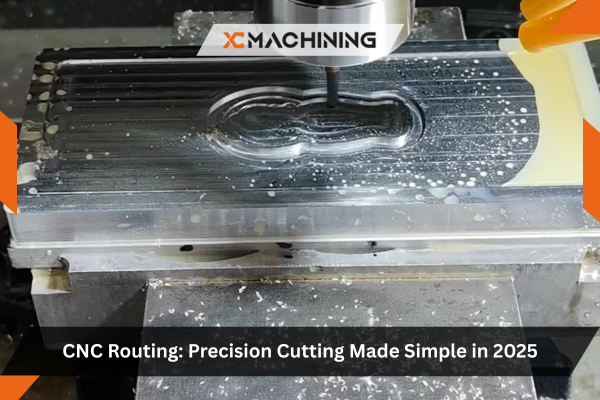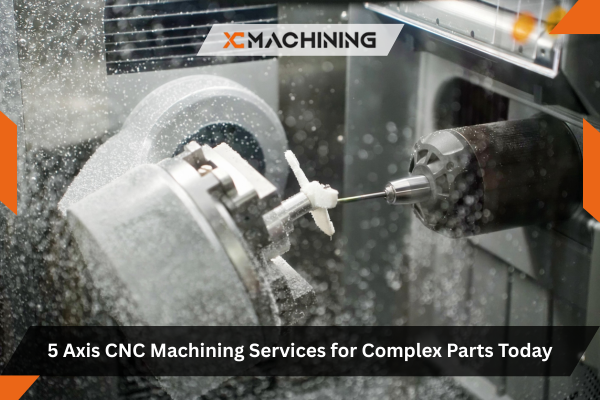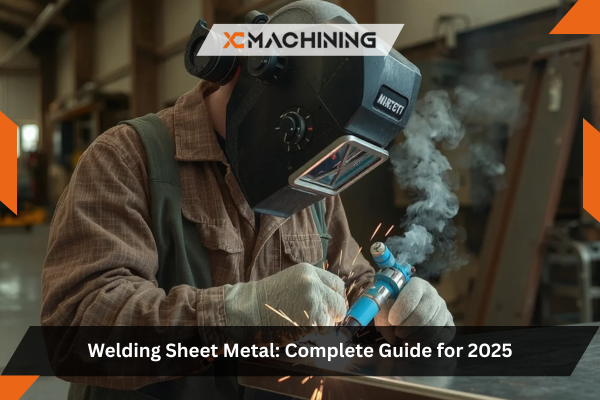The journey from concept to commercialized medical device is fraught with challenges—technical hurdles, regulatory requirements, market uncertainties, and intense competition. In this demanding environment, medical device prototyping serves as the critical bridge between innovative ideas and successful products that improve patient outcomes. Effective prototyping enables engineers to validate designs, identify problems early, refine functionality, demonstrate concepts to stakeholders, and gather clinical feedback—all before committing to expensive production tooling and regulatory submissions. Understanding the prototyping process, available manufacturing technologies, material considerations, and strategic approaches helps medical device companies, entrepreneurs, and research institutions accelerate innovation while managing risk and controlling development costs.
The Strategic Role of Medical Device Prototyping
Medical device development differs fundamentally from most product development due to stringent regulatory oversight, life-critical performance requirements, and the need to prove safety and efficacy before market entry. Prototyping addresses these unique challenges by enabling iterative refinement and validation at multiple development stages.
Concept validation represents the earliest prototyping stage where simple models prove basic feasibility. Does the underlying principle work? Can the device perform its intended function? Concept prototypes answer fundamental questions before significant resources flow toward detailed development.
Functional prototypes demonstrate complete device functionality using materials and processes approximating final production. These prototypes undergo mechanical testing, validate design calculations, and reveal integration issues between components. Engineers identify weaknesses, optimize geometries, and refine mechanisms through functional prototype iterations.
Design verification testing requires prototypes manufactured from actual device materials using production-equivalent processes. These prototypes undergo comprehensive testing protocols demonstrating that designs meet all specified requirements—a regulatory necessity documented in design history files.
Human factors evaluation uses high-fidelity prototypes closely resembling final products to assess usability with intended users. Healthcare professionals interact with prototypes in simulated use environments, revealing ergonomic issues, workflow problems, and training requirements that paper designs cannot expose.
Clinical evaluation may involve limited prototype quantities for feasibility studies or early clinical trials generating preliminary safety and efficacy data supporting regulatory submissions. These prototypes must meet heightened quality standards despite pre-commercial status.
Investor demonstrations leverage prototypes to secure funding. Tangible prototypes prove commitment, demonstrate progress, and provide concrete evidence of feasibility far more convincingly than presentations or renderings alone.
Prototyping Technologies for Medical Devices
Multiple manufacturing technologies serve medical device prototyping, each offering distinct advantages, limitations, and optimal applications. Selecting appropriate methods for each development stage balances speed, cost, material properties, and geometric capabilities.
CNC Machining: The Prototyping Workhorse
CNC machining services dominate medical device prototyping due to versatility, material options, and the ability to produce functional prototypes with mechanical properties matching production parts. This subtractive manufacturing approach removes material from solid stock, creating precise geometries in metals, plastics, and other materials critical to medical applications.
Advantages of CNC machining for medical device prototyping:
- Material authenticity: Prototypes machined from 316L stainless steel, Ti-6Al-4V titanium, PEEK, or other production materials exhibit identical mechanical properties, biocompatibility, and sterilization response as final devices.
- Precision and accuracy: Precision CNC machining services routinely achieve tolerances of ±0.001″ (±0.025mm) or tighter, enabling validation of tight-tolerance designs and proper fit between mating components.
- Surface finish control: Machined surface finishes range from rough (125 Ra) to precision-ground (8 Ra or better), allowing prototypes to replicate production surface characteristics affecting functionality, cleanability, or biocompatibility.
- Rapid turnaround: Simple components may complete in days, while complex assemblies typically require 2-4 weeks—significantly faster than tooling-dependent processes like injection molding.
- Apoyo a la iteración del diseño: Modified designs machine quickly without tooling changes, enabling rapid iteration based on testing feedback or design refinements.
- Functional testing validity: Prototypes manufactured through CNC precision machining services using production materials and processes provide valid mechanical testing data directly applicable to final devices.
CNC machining limitations to consider:
- Higher per-unit costs than production processes make large prototype quantities expensive
- Complex internal geometries or intricate lattice structures challenge subtractive manufacturing
- Some thermoplastic behaviors differ between machined and molded parts due to molecular orientation differences
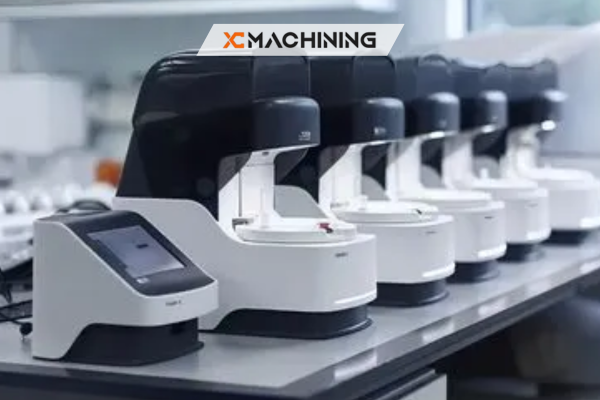
3D Printing (Additive Manufacturing)
Additive manufacturing technologies have revolutionized early-stage creación de prototipos de dispositivos médicos through geometric freedom and rapid iteration capabilities. Multiple 3D printing technologies suit different prototyping needs.
Modelado por deposición fundida (FDM): Economical for conceptual prototypes and non-functional models. Limited material properties and visible layer lines restrict use to visualization and basic form-factor validation.
Stereolithography (SLA) and Digital Light Processing (DLP): Photopolymer resins cure into smooth, detailed parts excellent for visual prototypes, ergonomic evaluation models, and surgical planning aids. Biocompatible resins enable limited functional testing, though mechanical properties rarely match production materials.
Sinterización selectiva por láser (SLS): Nylon powder fusion creates functional prototypes with decent mechanical properties. The process supports complex geometries including moving assemblies and integrated features impossible to machine. Material properties approximate but don’t exactly match production thermoplastics.
Metal 3D printing (DMLS/SLM): Direct metal laser sintering and selective laser melting produce titanium, stainless steel, and cobalt-chrome parts with properties approaching wrought or machined equivalents. High costs suit low-quantity, high-complexity prototypes where machining faces limitations. Growing adoption for patient-specific implants and complex surgical guides.
Polyjet/Material Jetting: Multi-material capability enables prototypes combining rigid and flexible materials or different colors in single builds. Excellent for simulating overmolded assemblies or multi-material devices before committing to complex tooling.
Urethane Casting and Silicone Molding
These bridge technologies produce 10-100 prototype parts economically when quantities exceed what CNC machining or 3D printing handle cost-effectively but remain too low for production tooling.
Master patterns created through Mecanizado CNC or 3D printing form silicone molds. Casting polyurethane or silicone resins into these molds produces parts simulating injection-molded components at fraction of tooling costs. Medical device prototyping utilizes this approach for housings, soft goods, and components where molded surface finish matters for ergonomic evaluation.
Rapid Tooling for Injection Molding
When prototype quantities reach 50-500 parts or when validating injection molding processing is critical, rapid tooling approaches produce molded prototypes economically. Aluminum molds machined on CNC equipment produce thousands of shots before wearing, providing genuine injection-molded parts at fraction of production tool costs.
Custom CNC machining services fabricate these prototype molds in 3-6 weeks, enabling molded prototype availability faster than traditional tooling while providing parts with authentic injection molding characteristics—molecular orientation, surface finish, and dimensional behavior matching production.
Material Selection in Medical Device Prototyping
Material choice profoundly impacts prototype validity and development strategy. Selecting materials depends on prototyping objectives, testing requirements, and production intent.
Metals for Medical Device Prototyping
Acero inoxidable: Stainless steel CNC machining services produce prototypes in 316L (excellent corrosion resistance, good biocompatibility) or 17-4 PH (higher strength after heat treatment) stainless steel. Surgical instruments, orthopedic devices, and cardiovascular components frequently prototype in stainless steel matching production material specifications.
Titanium alloys: Commercially pure titanium or Ti-6Al-4V prototypes validate implant designs, test osseointegration surface treatments, and assess mechanical performance under physiological loads. Titanium’s biocompatibility and strength-to-weight ratio make it essential for permanent implant prototyping despite higher machining costs and longer lead times.
Aluminum alloys: Non-implantable medical equipment prototypes often use aluminum for light weight and excellent machinability. Diagnostic equipment housings, portable device enclosures, and structural components machine economically from 6061-T6 aluminum, enabling rapid design iterations.
Engineering Plastics for Medical Prototyping
CNC plastic machining services work with diverse medical-grade polymers enabling authentic material property validation:
PEEK (Polyetheretherketone): This high-performance thermoplastic’s exceptional strength, biocompatibility, and sterilization resistance make it critical for spinal implant prototypes, surgical instrument components, and medical device housings requiring repeated autoclaving. PEEK’s radiolucency enables X-ray imaging validation of implant prototypes.
Ultem (Polyetherimide): Outstanding heat resistance and transparency suit sterilizable equipment prototypes. Medical device housings, surgical trays, and diagnostic equipment components frequently prototype in Ultem validating autoclave durability and optical properties.
Policarbonato: Medical-grade PC provides excellent clarity, impact resistance, and moderate heat resistance. Device housings, safety shields, and equipment covers prototype in polycarbonate when transparency matters.
Acetal (Delrin): Dimensional stability, low friction, and good mechanical properties benefit mechanism prototypes. Drug delivery device internals, surgical instrument mechanisms, and precision medical equipment components frequently use acetal prototypes.
Medical-grade silicone: Soft goods including gaskets, seals, catheters, and patient-contact surfaces require silicone prototypes validating flexibility, biocompatibility, and functional performance. Casting or molding processes produce silicone prototypes more effectively than machining.
Cost-Effective Prototyping Strategies
Medical device development budgets face constant pressure. Strategic prototyping approaches maximize learning while minimizing expenditure.
Phased Prototype Development
Rather than building complete device prototypes prematurely, phase development focuses resources where uncertainty is highest:
Phase 1 – Critical feature prototyping: Isolate and prototype the most uncertain or technically challenging components first. A surgical instrument’s complex jaw mechanism prototypes independently before complete instrument assembly. An implant’s bone interface surface prototypes separately from the complete implant geometry.
Phase 2 – Subsystem integration: Combine critical features into subsystem prototypes validating interfaces and integration without complete device fabrication. This approach identifies integration issues before full device prototyping expenses.
Phase 3 – Complete device prototypes: Build full devices only after critical features and subsystems prove viable. This staged approach concentrates spending where value is highest.
Material Substitution in Early Prototypes
Early development stages may use material substitutes reducing costs while providing adequate validation:
- Aluminum prototypes validate surgical instrument form factors before stainless steel production
- Standard engineering plastics prove housing designs before medical-grade polymer specification
- Mild steel validates orthopedic implant geometries before titanium prototyping
Later development phases transition to production materials when testing demands authentic properties.
Hybrid Prototyping Approaches
Combining technologies optimizes cost-performance tradeoffs:
- 3D printed housings combined with CNC machined internal mechanisms
- Cast prototype bodies assembled with machined precision components
- Standard commercial components (motors, sensors, fasteners) integrated with custom prototype elements
This hybrid approach focuses custom fabrication spending on unique device features while leveraging economical standard parts where possible.
Design for Prototyping Principles
Optimizing designs for prototyping technologies accelerates iteration and reduces costs.
CNC Machining Considerations
Designs optimized for custom CNC machining services prototype more economically:
Avoid deep, narrow pockets: Deep cavities with small openings challenge tool access and increase machining time. Where functionally acceptable, design features accessible to standard cutting tools.
Minimize setups: Designs requiring numerous workpiece repositions increase machining time and cost. Consolidate features on fewer surfaces where possible.
Standard tooling compatibility: Unusual hole sizes or thread pitches requiring special tooling increase costs. Standard drill sizes and thread specifications reduce expenses.
Appropriate tolerances: Specify tight tolerances only where functionally necessary. Unnecessarily tight specifications throughout designs increase machining time and cost without adding value.
Transition Planning
Design prototypes acknowledging eventual production transitions:
Consider production processes early: Prototype designs anticipating injection molding production should incorporate appropriate draft angles, wall thickness, and features compatible with molding despite CNC prototype manufacture.
Minimize prototype-to-production redesign: Prototypes closely resembling production intent reduce development time and testing burden when transitioning to production.
Document prototype-production differences: Clear documentation of how prototypes differ from production intent prevents confusion during transition and regulatory submission.
Testing and Validation with Prototypes
Medical device prototyping supports comprehensive testing programs validating safety and effectiveness.
Mechanical Testing
Precision CNC machining services produce test specimens and functional prototypes for:
Tensile and compressive testing: Validate material selection and design strength under expected loads.
Fatigue testing: Cyclic loading simulates years of clinical use, identifying failure modes and service life limitations.
Wear testing: Articulating surfaces test under physiological conditions validate durability and particle generation.
Environmental testing: Sterilization cycling, temperature extremes, humidity exposure, and chemical resistance testing use prototypes validating performance across expected conditions.
Functional Testing
Bench testing and simulated use protocols employ prototypes demonstrating device functionality:
Performance verification: Prototypes prove devices perform intended functions under specified conditions.
Limit testing: Extreme conditions reveal design margins and potential failure modes.
Usability assessment: Healthcare professionals evaluate prototypes in simulated clinical environments, identifying workflow issues and training requirements.
Biological Testing
Medical device prototyping from biocompatible materials enables preliminary biological evaluation:
Cytotoxicity screening: Cell culture contact identifies potential material toxicity early in development.
Sensitization assessment: Prototypes undergo skin sensitization testing evaluating allergic response potential.
Biocompatibility characterization: Comprehensive ISO 10993 testing may use prototypes generated through CNC plastic machining services or stainless steel CNC machining services using production-equivalent materials.
Regulatory Considerations in Medical Device Prototyping
Prototyping intersects with regulatory requirements throughout development. Strategic approaches ensure prototype activities support regulatory pathways efficiently.
Design History File Documentation
FDA and international regulators require design history files documenting device development. Prototype documentation should include:
- Design input specifications driving prototype requirements
- Prototype manufacturing specifications and drawings
- Verification testing protocols and results
- Design changes based on prototype learning
- Risk assessments updated based on prototype testing
Comprehensive documentation transforms prototyping expenses into regulatory assets supporting submissions.
Prototype-to-Production Equivalence
Regulatory submissions often rely partly on prototype testing data. Establishing equivalence between prototypes and production devices enables leveraging prototype test results:
Materials equivalence: Prototypes manufactured from identical materials to production devices provide directly applicable test data.
Process equivalence: Stainless steel CNC machining services producing prototypes using processes equivalent to production manufacturing generate valid test results.
Specification equivalence: Prototypes meeting production specifications (tolerances, surface finish, assembly) provide regulatory-acceptable validation data.
When prototype-production differences exist, thorough documentation and justification of how differences don’t affect test validity becomes essential.
Selecting Prototyping Partners
Outsourcing medical device prototyping requires careful partner selection ensuring technical capability, quality, and regulatory understanding.
Essential Qualifications
Medical device experience: Partners familiar with medical device requirements, biocompatibility considerations, and regulatory documentation provide smoother collaboration than general manufacturing services.
Material expertise: Suppliers offering both CNC plastic machining services and stainless steel CNC machining services provide flexibility as designs evolve across materials.
Quality systems: ISO 13485 certification demonstrates systematic quality management specific to medical devices, though not strictly required for prototype work.
Confidentiality protection: Medical device innovations require robust NDA and IP protection agreements.
Communication and collaboration: Responsive partners who provide design-for-manufacturing feedback accelerate development compared to order-takers simply executing drawings.
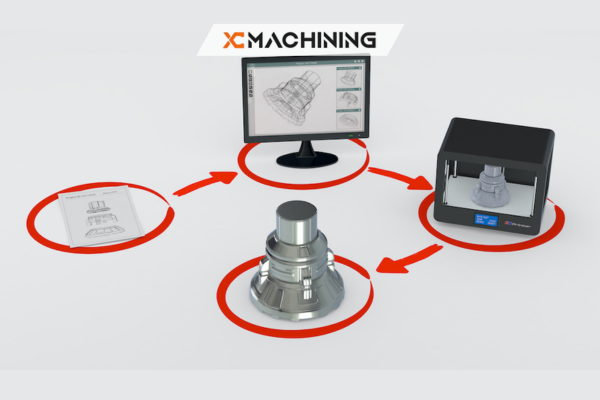
Technical Capabilities to Evaluate
Precision capabilities: Verify precision servicios de mecanizado cnc can achieve required tolerances (typically ±0.001″ minimum for medical devices).
Material options: Broad material capabilities enable authentic prototyping across development phases without changing suppliers.
Secondary operations: In-house or reliable partnerships for heat treatment, plating, assembly, and finishing streamline logistics.
Inspection equipment: Coordinate measuring machines (CMMs) and appropriate metrology tools demonstrate quality commitment.
Capacity and responsiveness: Balance between capacity to handle your prototyping needs and responsiveness to rush requests when development timelines compress.
Case Study: Accelerated Development Through Strategic Prototyping
Consider a startup developing a novel minimally invasive surgical instrument. Strategic prototyping accelerated their path to market:
Weeks 1-4: Concept prototypes fabricated via 3D printing validated basic mechanism function using inexpensive FDM technology. Three design iterations refined the mechanism at under $500 total.
Weeks 5-8: Critical jaw mechanism prototyped through custom CNC machining services in 17-4 PH stainless steel validated mechanical performance under realistic loads. This functional prototype cost $3,000 but provided authentic material properties for valid mechanical testing.
Weeks 9-16: Complete instrument prototypes manufactured by precision cnc machining services using production materials enabled usability testing with surgeons, revealing ergonomic improvements worth implementing before finalizing designs.
Weeks 17-24: Design verification prototypes manufactured by stainless steel CNC machining services using production-equivalent processes underwent comprehensive testing generating data supporting regulatory submission.
Result: Market entry 18 months from concept—6-12 months faster than competitors using traditional prototype-to-production approaches, establishing market leadership position worth millions in revenue.
Conclusión
Medical device prototyping represents far more than building preliminary versions of concepts. Strategic prototyping accelerates innovation, reduces development risk, supports regulatory compliance, and ultimately gets life-improving devices to patients faster. The combination of CNC machining services for authentic material properties, 3D printing for rapid geometric iteration, and hybrid approaches balancing cost with performance provides medical device developers powerful tools for navigating the challenging path from concept to commercial success.
Success requires thoughtful strategy—selecting appropriate prototyping technologies for each development stage, choosing materials balancing authenticity with economy, designing with both prototyping and production in mind, conducting comprehensive testing generating regulatory-acceptable data, and partnering with capable suppliers understanding medical device requirements. Companies mastering medical device prototyping gain competitive advantages through faster development cycles, fewer expensive late-stage design changes, and earlier market entry—ultimately improving patient outcomes through innovation accelerated by intelligent prototyping.
Preguntas frecuentes sobre la creación de prototipos de productos sanitarios
1. ¿Qué materiales se utilizan en la creación de prototipos médicos?
La selección de materiales varía mucho y se basa en factores como el método y la aplicación.
2. ¿Cuánto tiempo se necesita para crear prototipos?
Un prototipo sólo suele tardar unos días o semanas en completarse. Dependiendo de la complejidad del diseño, la mayoría de los ciclos completos de creación de prototipos pueden durar entre tres y seis meses.
3. ¿Qué prototipos de productos sanitarios no son adecuados para su uso en cirugías?
La mayoría de los prototipos se crean para evaluar o enseñar a los profesionales conceptos y dispositivos incipientes. Solo los dispositivos médicos aprobados por la Food and Drug Administration pueden utilizarse en la atención al paciente.
4. ¿Es caro crear prototipos?
Los costes varían. La mayoría de los primeros prototipos pueden crearse a un coste razonable utilizando métodos de impresión 3D. Los prototipos más avanzados, o los que se hacen para pruebas de conformidad, pueden ser más caros de producir.
5. ¿En qué se diferencia el proceso de creación de prototipos de la fabricación de productos finales aprobados para uso clínico?
La creación de prototipos sirve para evaluar y mejorar los diseños. La producción da lugar a dispositivos completos autorizados y diseñados para la práctica médica.


